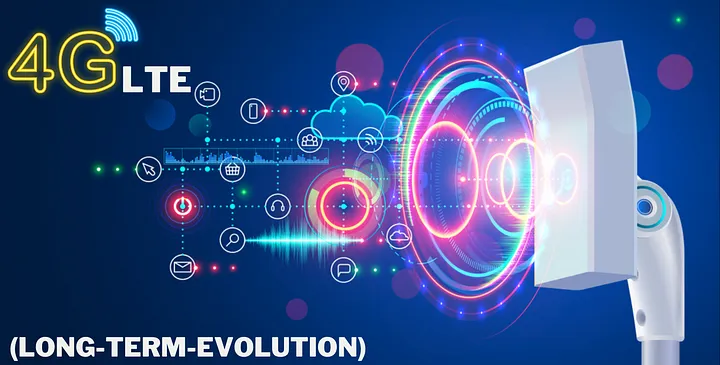Welcome to a series of articles that delve into the fascinating realm of User Experience (UX) in utilities. This collection aims to equip you with a foundational understanding of UX and its pivotal role in the evolving landscape of local LTE networks. Whether you’re a utility professional, an aspiring telecom engineer, or simply curious about the intersection of technology and user-centric design, this series will guide you through the essentials and progressively delve into more specialized and technical aspects.
- What is User Experience in Utilities?
User Experience in Utilities encompasses the principles, practices, and methodologies focused on optimizing the interaction between users and technology within utility sectors such as electricity, water, gas, and telecommunications. It goes beyond mere functionality and delves into the emotional and psychological aspects of how users engage with utility systems. By considering factors such as ease of use, efficiency, reliability, and aesthetics, UX professionals aim to enhance user satisfaction, productivity, and overall utility performance.
- How does User Experience in Utilities apply to Local LTE?
Local LTE networks play a crucial role in utilities, enabling enhanced communication and data transfer within utility infrastructures. Whether it’s a power grid, water management system, or smart city infrastructure, local LTE networks provide the foundation for seamless connectivity and real-time data transmission. User Experience in Utilities becomes essential when deploying and utilizing local LTE networks, ensuring that the technology is user-friendly, reliable, and capable of meeting the unique requirements of utility operations.
- What are the roles of Local LTE in User Experience in Utilities?
Local LTE networks offer several vital roles in enhancing User Experience in Utilities:
- Robust Connectivity: Local LTE networks provide reliable and secure connectivity, ensuring that utility systems and personnel can seamlessly communicate and exchange data.
- Real-Time Monitoring and Control: Through local LTE networks, utility operators can monitor assets and infrastructure in real-time, enabling proactive maintenance, quick response to emergencies, and optimized resource allocation.
- Data-Driven Decision Making: Local LTE networks facilitate the collection and transmission of large volumes of data, empowering utility companies to make informed decisions based on real-time insights.
- Integration of Emerging Technologies: With the advent of the Internet of Things (IoT) and Artificial Intelligence (AI), local LTE networks enable the integration of smart devices and intelligent algorithms, enhancing the efficiency and automation of utility operations.
- What are some use cases for User Experience in Utilities?
User Experience in Utilities finds applications in various scenarios, such as:
- Enhancing the usability of utility management software: By designing intuitive interfaces for billing systems and customer service platforms, utility companies can improve the overall experience for customers, enabling seamless bill payments, self-service options, and personalized support.
- Smart Meter Interfaces: User-friendly interfaces for smart meters allow customers to easily monitor their energy consumption, set energy-saving goals, and receive personalized recommendations, fostering a sense of control and encouraging sustainable behaviors.
- Mobile Applications for Field Technicians: User-centered design principles are essential when developing mobile applications for field technicians. Intuitive interfaces, clear navigation, and real-time data access enable efficient asset management, maintenance, and troubleshooting.
- Control Room Dashboards: Control room operators rely on user-friendly dashboards that provide real-time monitoring of utility grid conditions, alert systems, and predictive analytics. Clear visualization, intuitive controls, and quick access to critical information support effective decision-making and rapid response to emergencies.
- What is the mechanism of User Experience in Utilities, and why is it necessary?
User Experience in Utilities involves a holistic approach that encompasses research, design, testing, and iteration. UX professionals employ various methods such as user interviews, surveys, usability testing, and prototyping to understand user needs, preferences, and pain points. By gathering insights from end-users and incorporating their feedback throughout the design process, UX practitioners ensure
- How does User Experience in Utilities impact customer satisfaction?
User Experience in Utilities plays a vital role in enhancing customer satisfaction. By designing intuitive and user-friendly interfaces for billing systems, customer portals, and mobile applications, utility companies can improve the overall experience for their customers. Easy-to-understand information, personalized features, and efficient self-service options contribute to increased customer satisfaction and loyalty.
- What challenges can User Experience in Utilities address?
User Experience in Utilities can address various challenges faced by utility companies, including:
- Complex Interfaces: Utility systems often involve intricate processes and technical details. By simplifying and streamlining the user interface, UX professionals can help users navigate and interact with the systems more easily, reducing errors and improving efficiency.
- Training and Onboarding: Intuitive interfaces and user-friendly documentation can expedite the onboarding process for utility employees, reducing training time and ensuring a smooth transition to new systems or technologies.
- Accessibility: User Experience in Utilities should consider accessibility standards to ensure that individuals with disabilities can access and use utility services and systems effectively.
- How can Local LTE enhance User Experience in Utilities?
Local LTE networks offer several benefits that directly contribute to improving User Experience in Utilities:
- Reliable Connectivity: Local LTE networks provide robust and uninterrupted connectivity, ensuring seamless communication between utility assets, field personnel, and control centers. This reliability translates into enhanced efficiency and faster response times during critical situations.
- Enhanced Data Transmission: With high-speed and low-latency data transmission capabilities, local LTE networks enable real-time monitoring, data collection, and analysis. This empowers utility operators to make informed decisions promptly, optimizing resource allocation and improving overall system performance.
- Scalability and Flexibility: Local LTE networks can be tailored to the specific needs of utility operations. They offer scalability to accommodate growing demands, and their flexibility allows for customization and integration with emerging technologies, such as edge computing and advanced analytics.
- Security and Privacy: Local LTE networks prioritize security, offering encryption and authentication protocols to protect sensitive utility data. This ensures the integrity and privacy of information exchanged within the network, enhancing trust and confidence in utility services.
- Can User Experience in Utilities help reduce operational costs?
Yes, User Experience in Utilities can contribute to cost reduction in several ways:
- Improved Efficiency: User-friendly interfaces and streamlined processes reduce the learning curve and minimize errors, leading to increased operational efficiency. This, in turn, can result in cost savings by optimizing resource allocation and reducing manual interventions.
- Self-Service Options: Intuitive self-service portals and mobile applications empower customers to perform tasks independently, such as bill payments or reporting issues. This reduces the need for customer support interactions, ultimately lowering operational costs.
- Predictive Maintenance: User Experience in Utilities can enable predictive maintenance by providing real-time data and alerts. This proactive approach to maintenance helps prevent equipment failures, reduce downtime, and optimize maintenance schedules, leading to cost savings.
In conclusion, User Experience in Utilities plays a crucial role in optimizing the interaction between users and technology within utility sectors. By ensuring intuitive interfaces, reliable connectivity, and personalized experiences, utility companies can enhance customer satisfaction, operational efficiency, and overall utility performance. Local LTE networks serve as a key enabler, providing the connectivity and capabilities necessary to deliver seamless user experiences. As you explore the subsequent articles in this series, you will gain a deeper understanding of the technical aspects and specialized considerations involved in User Experience in Utilities. By acquiring this baseline understanding, you will be better prepared to construct your own private LTE network and navigate the multidisciplinary fields that contribute to its success.




